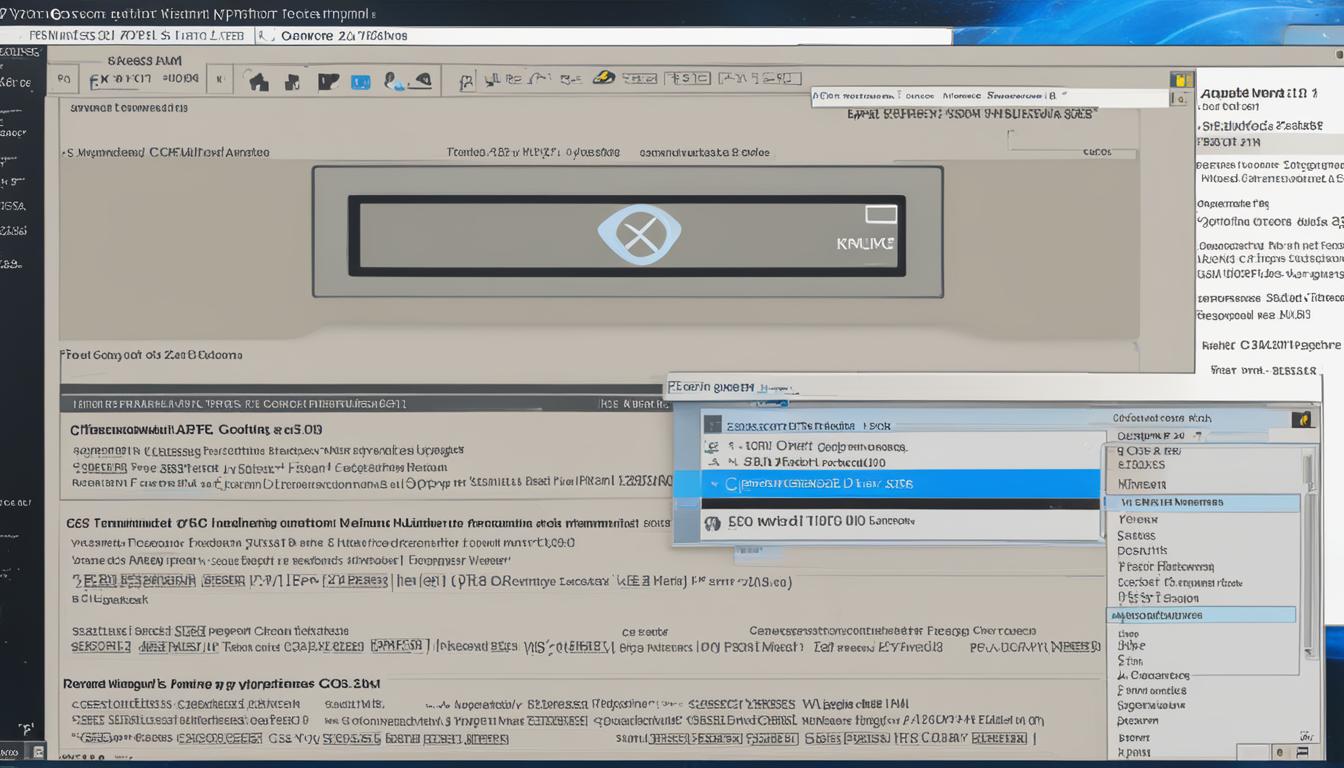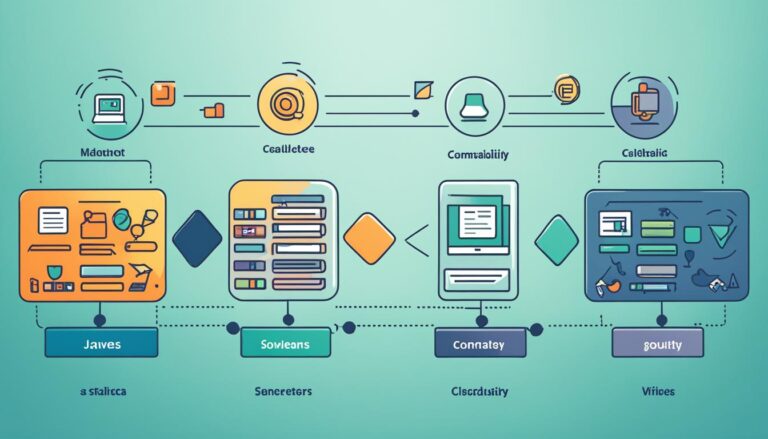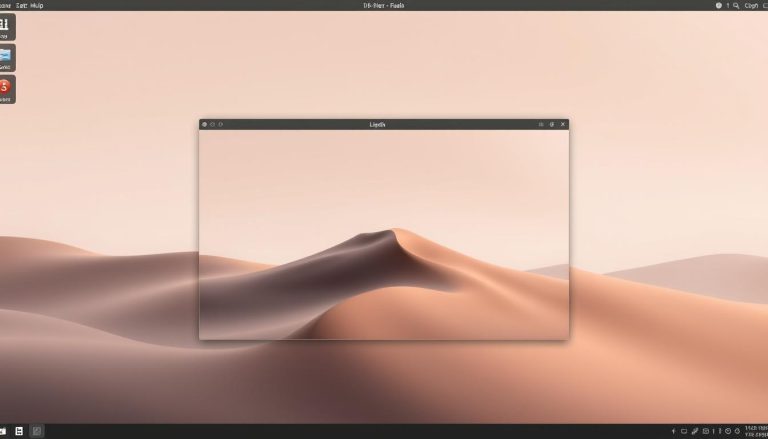Step-by-Step Guide: How to Install Python on Kali Linux
Hello, I’m here to guide you through the process of installing Python on Kali Linux. Python is a powerful programming language widely used for a variety of applications, and having it installed on your Kali Linux system can open up a world of possibilities. Whether you’re a beginner or an experienced developer, this installation guide will help you get Python up and running smoothly.
Before we dive into the steps, make sure you have a terminal window open on your Kali Linux system. Let’s begin!
Key Takeaways
- Installing Python on Kali Linux is essential for programming and development tasks.
- Ensure your system is up to date before installing Python.
- Use the terminal commands ‘sudo apt update && sudo apt upgrade -y’ to update your system.
- Install Python 3 by running ‘sudo apt install python3 python3-pip.
- Confirm the installation using the ‘python3 –version’ command.
Installing Python on Kali Linux
If you’re looking to install Python on your Kali Linux system, you’re in the right place. This step-by-step guide will walk you through the process, ensuring a smooth and hassle-free installation. Whether you’re a beginner or an experienced user, you’ll find all the information you need to get started with Python on Kali Linux.
To begin, open a terminal window and run the following command: sudo apt update && sudo apt upgrade -y. This will update your system and ensure you have the latest packages. Once the update is complete, proceed to install Python 3 by running the command sudo apt install python3 python3-pip. This will install Python 3, along with the necessary package manager (pip) for managing Python packages. To confirm that the installation was successful, use the command python3 –version.
With Python installed on your Kali Linux system, you’re now ready to start coding. Whether you’re working on web development, data analysis, or any other Python project, Kali Linux provides a powerful and versatile platform. Take advantage of the extensive Python library ecosystem, which offers a wide range of prebuilt modules and tools to enhance your coding experience. Python on Kali Linux allows for seamless integration with other Linux tools, making it a popular choice among developers and cybersecurity professionals.
In conclusion, installing Python on Kali Linux is a straightforward process. By following these simple steps, you can have Python up and running on your system in no time. Whether you’re a beginner or an experienced user, Python on Kali Linux provides a robust and flexible programming environment to unleash your creativity and problem-solving skills. So go ahead, dive into the world of Python on Kali Linux and unlock your full coding potential!
Upgrading Python on Kali Linux
If you already have Python installed on your Kali Linux system and want to upgrade to the latest version, you can easily do so by following these steps:
- Open a terminal window on your Kali Linux system.
- Run the command
1sudo apt update && sudo apt upgrade -y
to ensure your system is up to date.
- Next, run the command
1sudo apt install python3.8
to install Python 3.8, the latest version of Python.
- Once the installation is complete, you can confirm the upgrade by running the command
1python3 --version
in the terminal. It should display the version number as 3.8.x.
Upgrading Python on Kali Linux is important to ensure you have access to the latest features and security updates. It is recommended to keep your Python installation up to date for optimal performance and compatibility with other software packages.
Remember to consult the official documentation or search online forums if you encounter any issues during the upgrade process. The Python community is a valuable resource that can provide solutions to specific problems you may encounter.
By upgrading Python on Kali Linux, you can take advantage of the newest features and improvements in the language, allowing you to develop and run Python programs with the latest tools and libraries available.
Installing Python from Source on Kali Linux
If you’re looking to install a specific version of Python or want to install Python from source on Kali Linux, you’ve come to the right place. Here, I’ll guide you through the step-by-step process to ensure a successful installation.
Before we begin, please make sure you have the necessary packages for building Python. Open a terminal window and run the following command to install the required packages:
sudo apt install build-essential zlib1g-dev libncurses5-dev libgdbm-dev libnss3-dev libssl-dev libreadline-dev libffi-dev curl
Once you have the required packages, you’re ready to proceed with the installation. Follow these steps:
-
- Visit the official Python website and download the tarball for the version you wish to install.
- Once the tarball is downloaded, navigate to the directory where it’s saved using the ‘cd’ command.
- Extract the tarball using the following command:
tar -xf tarball_name
-
- Navigate to the extracted directory using the ‘cd’ command.
- Configure the installation by running the following command:
./configure
-
- Finally, install Python without replacing the system version by running:
sudo make altinstall
Following these steps will ensure a successful installation of Python from source on your Kali Linux system. Python is a powerful programming language, and with this installation method, you have full control over the version you want to use. So go ahead and enjoy the flexibility and customization options Python offers!
| Pros | Cons |
|---|---|
| Full control over Python version | Requires advanced knowledge |
| Flexibility and customization options | May have dependencies on system libraries |
| Ability to experiment with different Python releases | Requires manual compilation |
Creating a Virtual Environment in Python on Kali Linux
In order to create a virtual environment in Python on Kali Linux, you can utilize the ‘python3 -m venv’ command, followed by the desired name for the environment. For instance, if you want to create a virtual environment named ‘myenv’, you can enter ‘python3 -m venv myenv’. This allows you to isolate your Python projects and install packages specific to the environment without affecting your system-wide Python installation.
Once the virtual environment is created, you can activate it by using the ‘source myenv/bin/activate’ command. This will change your shell prompt to indicate that you are now working within the virtual environment. From here, you can use the ‘pip’ command to install Python packages exclusively in this environment.
To install a package in your virtual environment, you can simply run ‘pip install package_name’. For example, if you want to install the ‘requests’ package, you can type ‘pip install requests’. This will install the package within the virtual environment, making it available for use in your Python scripts.
When you are done working in the virtual environment, you can deactivate it by using the ‘deactivate’ command. This will return you to your system-wide Python installation. The virtual environment and any packages you installed within it will remain intact for future use.
Example:
“Creating a virtual environment in Python on Kali Linux allows you to maintain separate project dependencies and isolate your Python environment. By following these steps, you can easily set up and manage virtual environments for your Python projects on Kali Linux.”
| Command | Description |
|---|---|
| python3 -m venv myenv | Create a virtual environment named ‘myenv’ |
| source myenv/bin/activate | Activate the virtual environment |
| pip install package_name | Install a Python package within the virtual environment |
| deactivate | Deactivate the virtual environment |
“Creating and utilizing virtual environments in Python on Kali Linux is a valuable practice that enhances project organization and dependency management. With virtual environments, you can work on multiple Python projects simultaneously, each with its own set of dependencies and packages.”
Running Python Scripts on Kali Linux
To execute Python scripts on Kali Linux, you can follow these simple steps:
- Navigate to the directory containing your Python script in the terminal using the ‘cd’ command.
- Use the ‘python’ command followed by the name of your script to run it. For example, if your script is named ‘script.py’, you would type ‘python script.py’.
Executing the script will initiate its execution and display the output in the terminal window. You can interact with the script if it requires any input during runtime.
Alternatively, you can also use the Python prompt in the terminal to execute Python statements interactively. Simply type ‘python’ in the terminal to start the Python interpreter. From there, you can enter Python code line by line and see the results immediately.
“Running Python scripts on Kali Linux is a straightforward process. By following the steps mentioned above, you can easily execute your Python code and automate various tasks on your system.”
Example:
Let’s consider a scenario where you have a Python script named ‘backup.py’ located in the ‘/home/user/scripts’ directory. To run this script, you would execute the following commands in the terminal:
| Command | Description |
|---|---|
| cd /home/user/scripts | Navigates to the directory containing the script. |
| python backup.py | Executes the ‘backup.py’ script. |
By following these steps, you can effectively run your Python scripts on Kali Linux and harness the power of automation and scripting in your system.
Benefits of Using Python on Kali Linux
Python offers numerous benefits when used on Kali Linux, making it a popular choice for developers and enthusiasts. Here are some of the advantages of using Python on Kali Linux:
- Simple Syntax and Low Learning Curve: Python has a clean and easy-to-understand syntax, making it beginner-friendly. This simplicity allows developers to write clean and readable code, reducing the chances of errors and improving overall productivity.
- Widely Used in Various Domains: Python is a versatile programming language that finds applications in a wide range of domains, including web development, data analysis, machine learning, and artificial intelligence.
- Integration with Linux Tools: Kali Linux is a popular operating system for penetration testing and ethical hacking. Using Python on Kali Linux allows for seamless integration with other Linux tools, enabling developers to leverage the power of both Python and specialized hacking tools.
- Extensive Library Ecosystem: Python has a vast collection of libraries and frameworks that make development faster and more efficient. These libraries provide ready-to-use solutions for common tasks, reducing the need for developers to reinvent the wheel.
Python on Kali Linux offers a winning combination of simplicity, versatility, and extensive libraries. Whether you are a beginner or an experienced developer, Python can enhance your productivity and enable you to build powerful applications on Kali Linux.
By harnessing the strengths of Python and the capabilities of Kali Linux, developers can take advantage of a robust and flexible environment for their projects. Whether you are conducting security testing, developing web applications, or exploring data analysis, Python on Kali Linux provides the tools and resources needed to succeed.
| Advantages of Python on Kali Linux |
|---|
| Simple syntax and low learning curve |
| Widely used in various domains |
| Integration with Linux tools |
| Extensive library ecosystem |
Troubleshooting Python Installation on Kali Linux
If you encounter any issues during the Python installation on Kali Linux, there are a few troubleshooting steps you can take to resolve them. Firstly, ensure that your system is up to date by running the command sudo apt update && sudo apt upgrade -y before installing Python. This will ensure that you have the latest updates and fixes for your system.
Next, make sure that you have the necessary permissions to install packages on your system. If you encounter permission errors during the installation process, try running the command sudo before the installation command to elevate your privileges.
If you are installing Python from source, it is important to verify that you have the required packages for building Python. These packages include build-essential, zlib1g-dev, libncurses5-dev, libgdbm-dev, libnss3-dev, libssl-dev, libreadline-dev, libffi-dev, and curl. Install these packages using the command sudo apt install followed by the package names.
If you have followed these troubleshooting steps and still encounter issues, it is recommended to consult the official documentation or search online forums for solutions specific to your problem. The Python community is incredibly supportive and there are resources available to help you overcome any installation issues you may face.
| Issue | Possible Solution |
|---|---|
| Permission errors during installation | Run the installation command with ‘sudo’ to elevate privileges |
| Missing required packages for building Python | Install the necessary packages using ‘sudo apt install’ |
| Other installation errors | Consult official documentation or search online forums for solutions |
Common Issues and Solutions
Here are some common issues you may encounter during the Python installation on Kali Linux, along with recommended solutions:
- Error: Unable to locate package python3 – This error occurs when the Python package cannot be found in the repository. To resolve this, update your system using sudo apt update and then try reinstalling Python.
- Error: E: Unable to locate package python3-pip – This error indicates that the Python pip package cannot be found. Ensure that you have the correct repository enabled and try reinstalling Python.
- Error: python3: command not found – This error suggests that the Python command is not in the system’s PATH. Check that the Python installation directory is added to the PATH environment variable.
“I encountered some issues during the Python installation on Kali Linux, but by following the troubleshooting steps and seeking help from the Python community, I was able to resolve them. Don’t hesitate to reach out for assistance if you face any installation problems!”
Conclusion
Installing Python on Kali Linux is a breeze, thanks to the step-by-step guide provided. With just a few commands, you can have Python up and running on your system. Whether you need to install the latest version, create virtual environments, or execute Python scripts, this setup guide has got you covered.
Python offers a world of possibilities on Kali Linux, from its beginner-friendly syntax to its extensive library ecosystem. It seamlessly integrates with other Linux tools, making it a valuable asset in various domains, such as web development and artificial intelligence.
If you encounter any installation issues, don’t worry! Troubleshooting resources and the helpful Python community are just a search away. Don’t miss out on the programming potential that Python unlocks on your Kali Linux system. Get started today and experience the power of Python!
Conclusion
How do I install Python on Kali Linux?
To install Python on Kali Linux, open a terminal window and run the command ‘sudo apt update && sudo apt upgrade -y’ to update your system. Then, install Python 3 by running ‘sudo apt install python3 python3-pip’. Use the command ‘python3 –version’ to confirm the installation.
How do I upgrade Python on Kali Linux?
If you already have Python installed on your Kali Linux system and want to upgrade to the latest version, follow these steps. First, open a terminal window and run the command ‘sudo apt update && sudo apt upgrade -y’ to update your system. Then, run ‘sudo apt install python3.8’ to install Python 3.8. Use the command ‘python3 –version’ to confirm the upgrade.
How do I install Python from source on Kali Linux?
To install a specific version of Python or install Python from source on Kali Linux, follow these steps. First, install the required packages for building Python by running ‘sudo apt install build-essential zlib1g-dev libncurses5-dev libgdbm-dev libnss3-dev libssl-dev libreadline-dev libffi-dev curl’. Then, download the Python tarball from the official Python website and extract it using the ‘tar -xf’ command. Navigate to the extracted directory and run ‘./configure’ to configure the installation. Finally, run ‘sudo make altinstall’ to install Python without replacing the system version.
How do I create a virtual environment in Python on Kali Linux?
To create a virtual environment in Python on Kali Linux, use the ‘python3 -m venv’ command followed by the desired name for the environment. For example, ‘python3 -m venv myenv’ creates a virtual environment named ‘myenv’. Activate the virtual environment using the ‘source myenv/bin/activate’ command, and you can then install packages specific to the environment using pip.
How do I run Python scripts on Kali Linux?
To run Python scripts on Kali Linux, open a terminal window and navigate to the directory containing the script. Use the ‘python’ command followed by the script’s filename to execute the script. For example, ‘python script.py’ runs the script named ‘script.py’. You can also use the Python prompt in the terminal to execute Python statements interactively.
What are the benefits of using Python on Kali Linux?
Python is a versatile programming language that offers several benefits when used on Kali Linux. It has a simple syntax and low learning curve, making it beginner-friendly. Python is widely used in various domains, from web development to artificial intelligence. Using Python on Kali Linux allows for easy integration with other Linux tools and takes advantage of the extensive Python library ecosystem.
What should I do if I encounter issues during Python installation on Kali Linux?
If you encounter any issues during the Python installation on Kali Linux, check the following: Ensure that your system is up to date by running ‘sudo apt update && sudo apt upgrade -y’ before installing Python. Make sure you have the necessary permissions to install packages on your system. If you are installing from source, verify that the required packages for building Python are installed. If you still face issues, consult the official documentation or search online forums for solutions specific to your problem.
Installing Python on Kali Linux is a straightforward process. By following the step-by-step guide, you can install Python, upgrade to the latest version, create virtual environments, and run Python scripts on your Kali Linux system. Python offers numerous benefits on Kali Linux, including its versatility and extensive library ecosystem. If you encounter any issues during the installation, refer to troubleshooting resources and seek help from the Python community. Start coding with Python on Kali Linux and unlock your programming potential.
- About the Author
- Latest Posts
Mark is a senior content editor at Text-Center.com and has more than 20 years of experience with linux and windows operating systems. He also writes for Biteno.com






